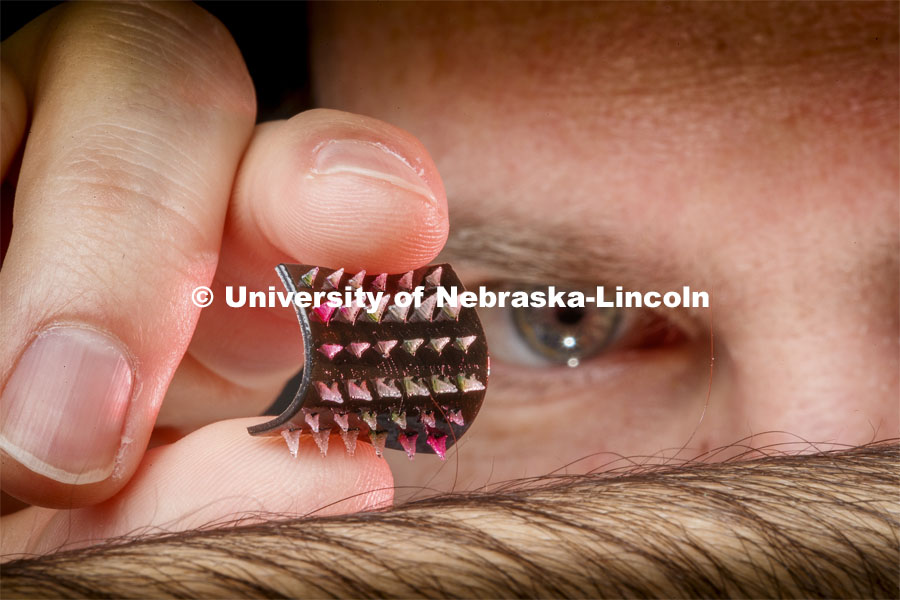
Title:
200226 Bandage 019 (permalink)
Order Instructions:
To order this photo, send Craig Chandler an email and include the text '200226 Bandage 019'.
Caption:
Graduate student Jordan Rosenbohm holds a flexible prototype for a smart bandage with tiny 3-D printed dagger-like needles. The clusters of needles are connected to channels that would deliver the medicine via an external pump. A new smart bandage design could eventually heal chronic wounds by getting under a patient’s skin — where an array tiny needles would deliver therapeutic drugs to the still-living but damaged tissue that needs them. Ali Tamayol and Ruiguo Yang authored the study with Nebraska’s Seth Harris, Craig Kreikemeier-Bower, Fariba Aghabaglou, Azadeh Mostafavi, Ian Ghanavati and Jordan Rosenbohm; Nebraska alumni Hossein Derakhshandeh, Alec McCarthy, Chris Wiseman and Zack Bonick; Harvard Medical School’s Dennis Orgill and Pooria Mostafalu; and Seyed Masoud Moosavi Basri of Shahid Beheshti University. February 26, 2020. Photo by Craig Chandler / University Communication.
Copyright:
© 2020, The Board of Regents of the University of Nebraska. All rights reserved.